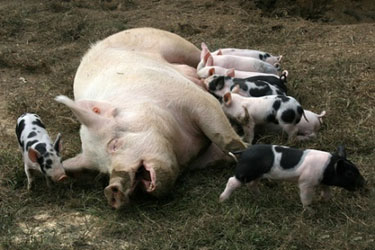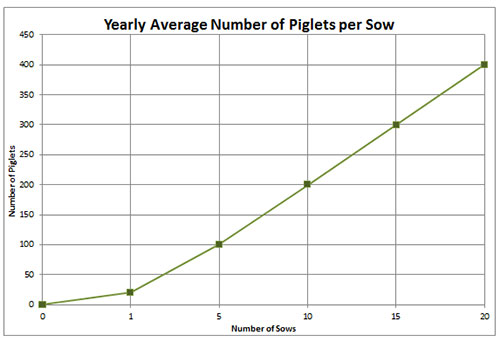
Source: grateful, Woodleywonderworks, Flickr

Source: grateful, Woodleywonderworks, Flickr
A rancher raises pigs on his farm. He currently has a total of 20 sows (female pigs). A sow is pregnant for about 4 months and usually gives birth to a litter of 8 to 12 pigs at a time. A sow can have 2 litters each year. The rancher is trying to plan ahead and ensure he has enough space for all his pigs. He wants to estimate the number of piglets he will have over the next year. How many piglets can the rancher expect to have over the next year?
Let's put this information in a data table so we can take a look at trends.

So, if an average sow can have 20 piglets each year, how many would 20 sows have?
20 sows x 20 piglets a year = 400 pigs
What if the rancher buys a few more sows or sells a few? Now, he no longer has a total of 20. Let's put this information on a graph to see if we can find any trends.

This graph now gives the rancher the ability to predict how many piglets he can expect each year based on the number of sows he has. If he collected data on the number of piglets each sow actually had, he could see which sow had more offspring than average and which had fewer than average.
He now has the ability to make adjustments to the animal feed and to judge when he needs to expand or when he needs to sell some of the sows.
Data is a powerful tool.